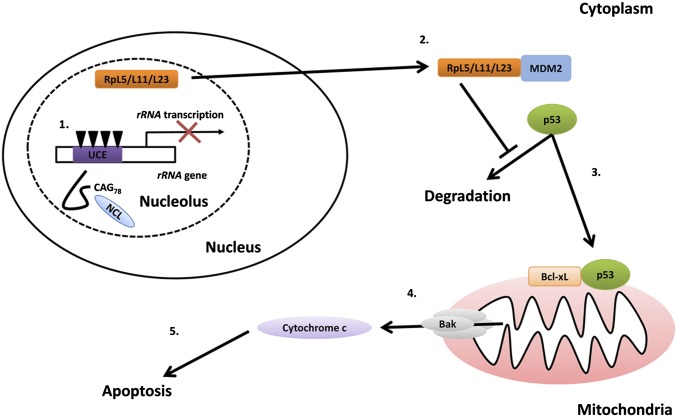Fig. 5.
A proposed model for the activation of nucleolar stress signaling by expanded CAG RNAs. The expression of expanded CAG RNA interacts directly with nucleolin (NCL, in light blue). The expanded CAG-specific RNA–protein interaction causes CpG hypermethylation (inverted triangles) of the upstream control element (UCE, in purple) in the rRNA promoter and results in reduction of rRNA transcription. A functional ribosome consists of both rRNAs and ribosomal proteins. A reduced level of rRNAs causes accumulation of free ribosomal proteins (such as RpL5, RpL11, and RpL23, in orange). The interaction between free ribosomal proteins and E3 ubiquitin ligase MDM2 (in blue) leads to mitochondrial accumulation of p53. The interaction between p53 and antiapoptotic proteins (Bcl-xL, in orange) causes oligomerization of proapoptotic proteins (Bak, in gray) on the mitochondrial membrane and results in cytochrome c (in light purple) release. Cytosolic cytochrome c in turn activates the caspase cascade and induces apoptosis.

